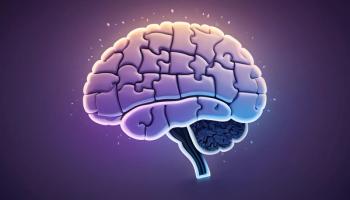
From the Pages of Psychiatric Times: April 2023
The experts weighed in on a wide variety of psychiatric issues for the April 2023 issue of Psychiatric Times.
In the April issue of Psychiatric Times®, we worked with experts from multiple psychiatric areas to bring you thoughtful articles about a wide variety of psychiatric topics, from analyzing co-occurring substance use and eating disorders to exploring the real connections between gun violence and mental health. Here are some highlights from the issue.
Changing the Narrative: Mental Illness and Gun Violence
Another day, another shooting, another finger pointing to mental illness. With the extensive news coverage of gun violence, it seems there is a mass shooting in the United States every single day—but the reality is far worse.
According to the Gun Violence Archive, there were 44,313 gun violence deaths in the United States in 2022. Of these, 20,223 deaths were from homicide, murder, accidents, or defensive gun use and 24,090 were from suicide. Furthermore, 647 qualified as mass shootings, which are broadly defined as incidents in which 4 or more individuals—not including the shooter—are shot. Alarmingly, gun violence is now the leading cause of death for US children and adolescents.
The Black Youth Mental Health Epidemic: A Crisis in Its Own Right
The recently released Youth Risk Behavior Survey report shows us that markers of poor mental health, ranging from feelings of hopelessness to suicide attempts, have worsened over the past decade in teenagers or, at best, stayed the same. Indeed, we are in the midst of an adolescent mental health crisis. But if you look at media coverage, this seems to be code for “white adolescent mental health crisis.”
From the images used to discuss concerning mental health statistics surrounding teen girls to the personal narratives highlighted of adolescents struggling, the plight of white children is commonly centered as the standard, delegating Black teens to the periphery.
Co-occurring Substance Use and Eating Disorders
There have been many studies analyzing co-occurrences between substance use disorders (SUDs) and eating disorders (EDs). The DSM-5 describes different EDs, including anorexia nervosa (AN), bulimia nervosa (BN), and binge-eating disorder (BED). AN is mainly characterized by a low body weight due to a persistent restriction of food intake, a fear of gaining weight, and a body image distortion.
Two AN subtypes have been proposed: AN-restrictive (AN-R) and AN-binge/purge (AN-BP). BN is characterized by recurrent episodes of binge eating (the consumption, in a discrete period of time, of an objectively large amount food with a sense of loss of control during the episode).
Early Intervention for Schizophrenia on the Horizon: Implications for Clinicians and Patients
Schizophrenia is one of the most recognized yet least understood chronic brain disorders. The estimates of the international prevalence of schizophrenia among noninstitutionalized individuals are 0.33% to 0.75%. Schizophrenia is complex and characterized by substantial biological and clinical heterogeneity that varies significantly from person to person, leading to missed diagnosis and conflation with other diseases or drug use.
For instance, psychosis is a hallmark trait of schizophrenia but it may also be present in other clinical conditions, such as posttraumatic stress disorder, bipolar disorder, major depression, certain personality disorders, and delusional disorders. Furthermore, stimulant and cannabis use as well as psychedelics can cause individuals to have temporary psychosis-like symptoms.
See the full April issue of Psychiatric Times
Do you have a comment on any of these or other articles? Have a good idea for an article and want to write? Interested in sharing your perspectives? Write to us at
Newsletter
Receive trusted psychiatric news, expert analysis, and clinical insights — subscribe today to support your practice and your patients.
















